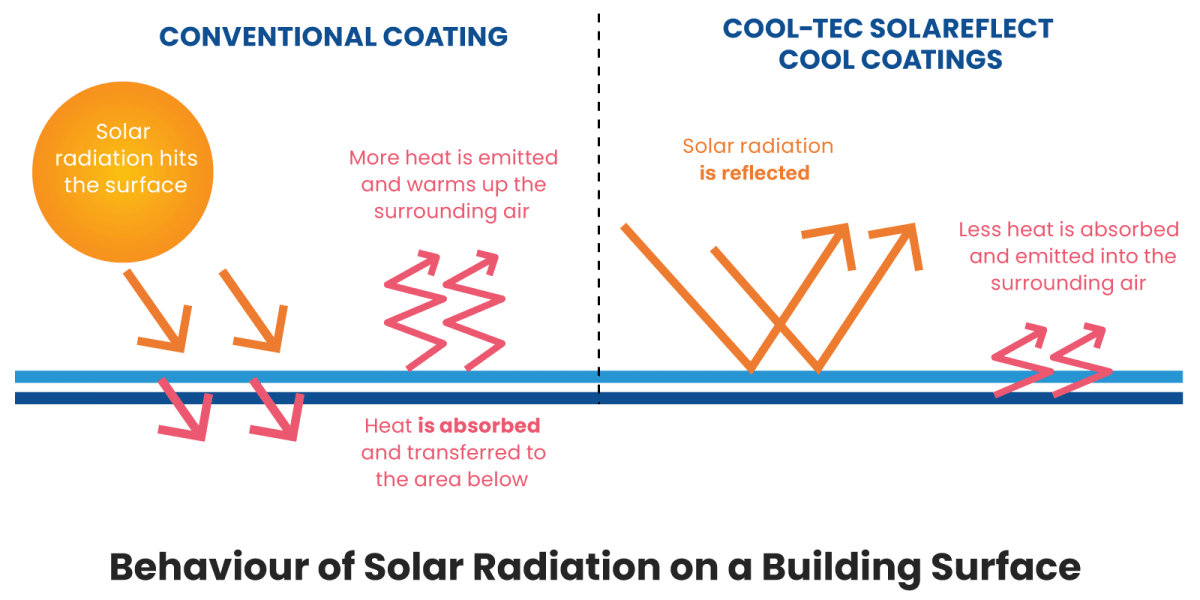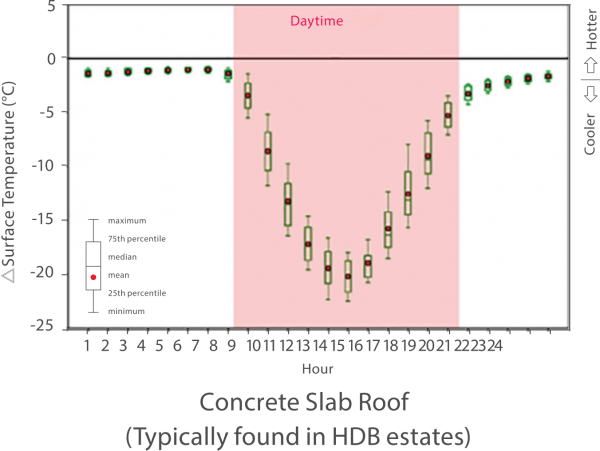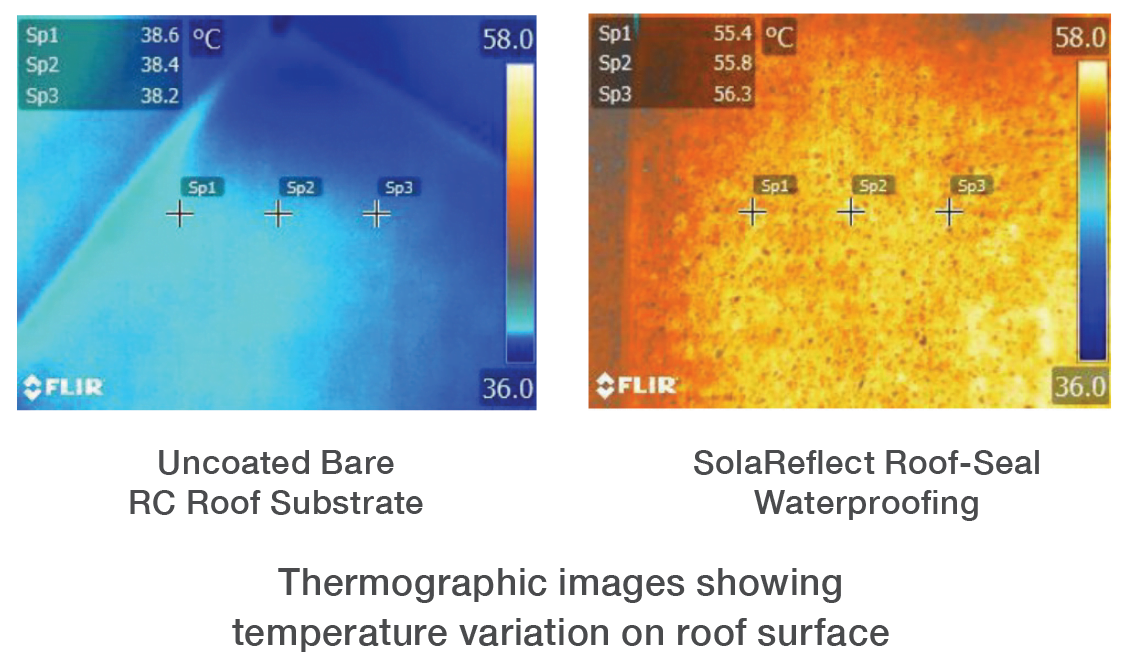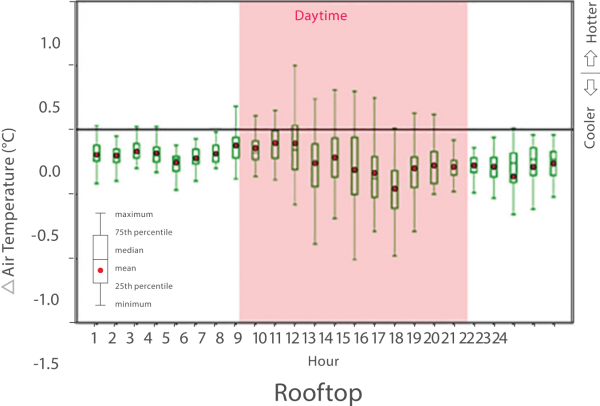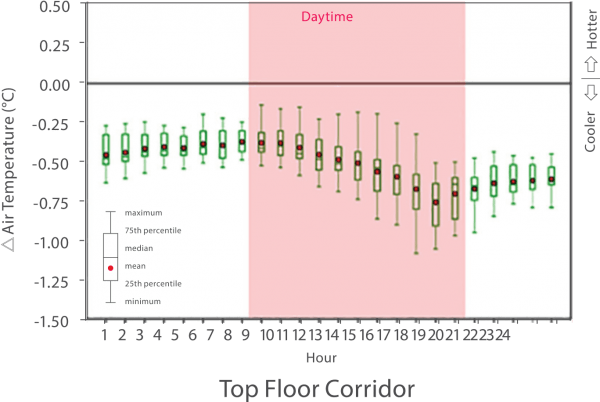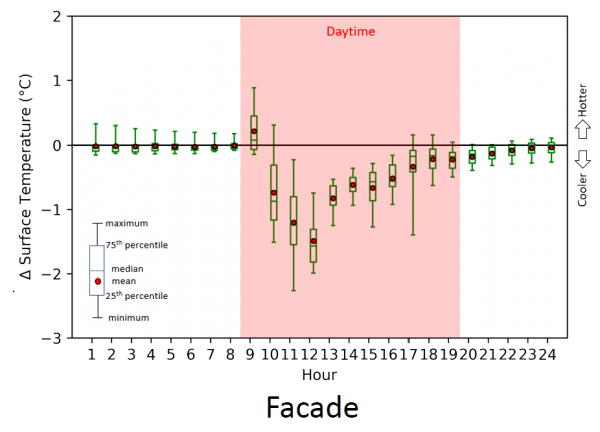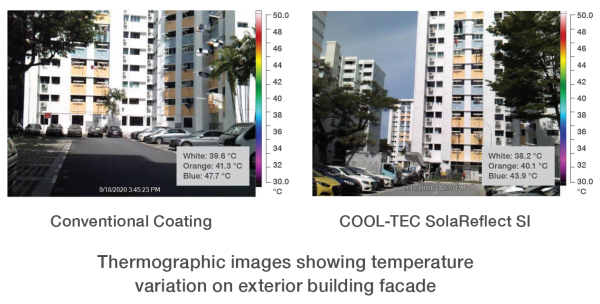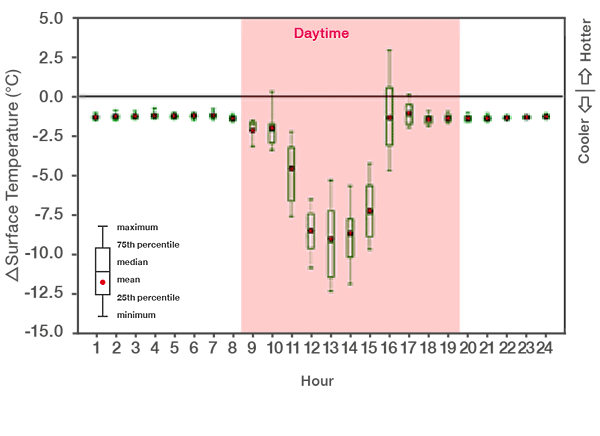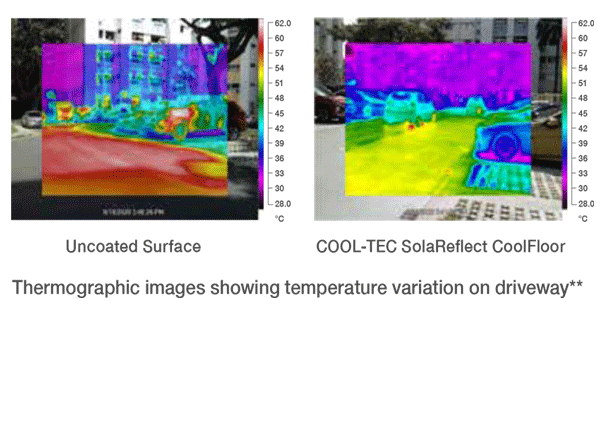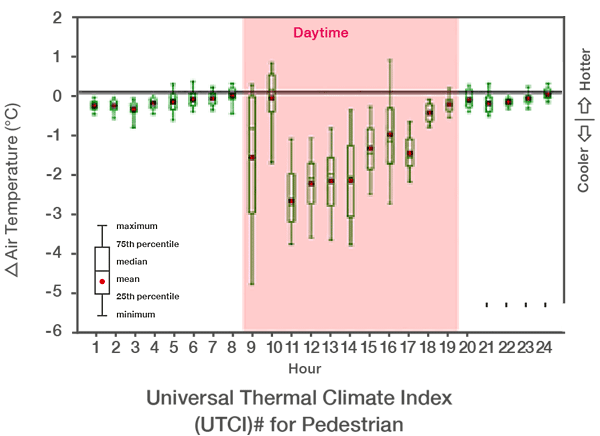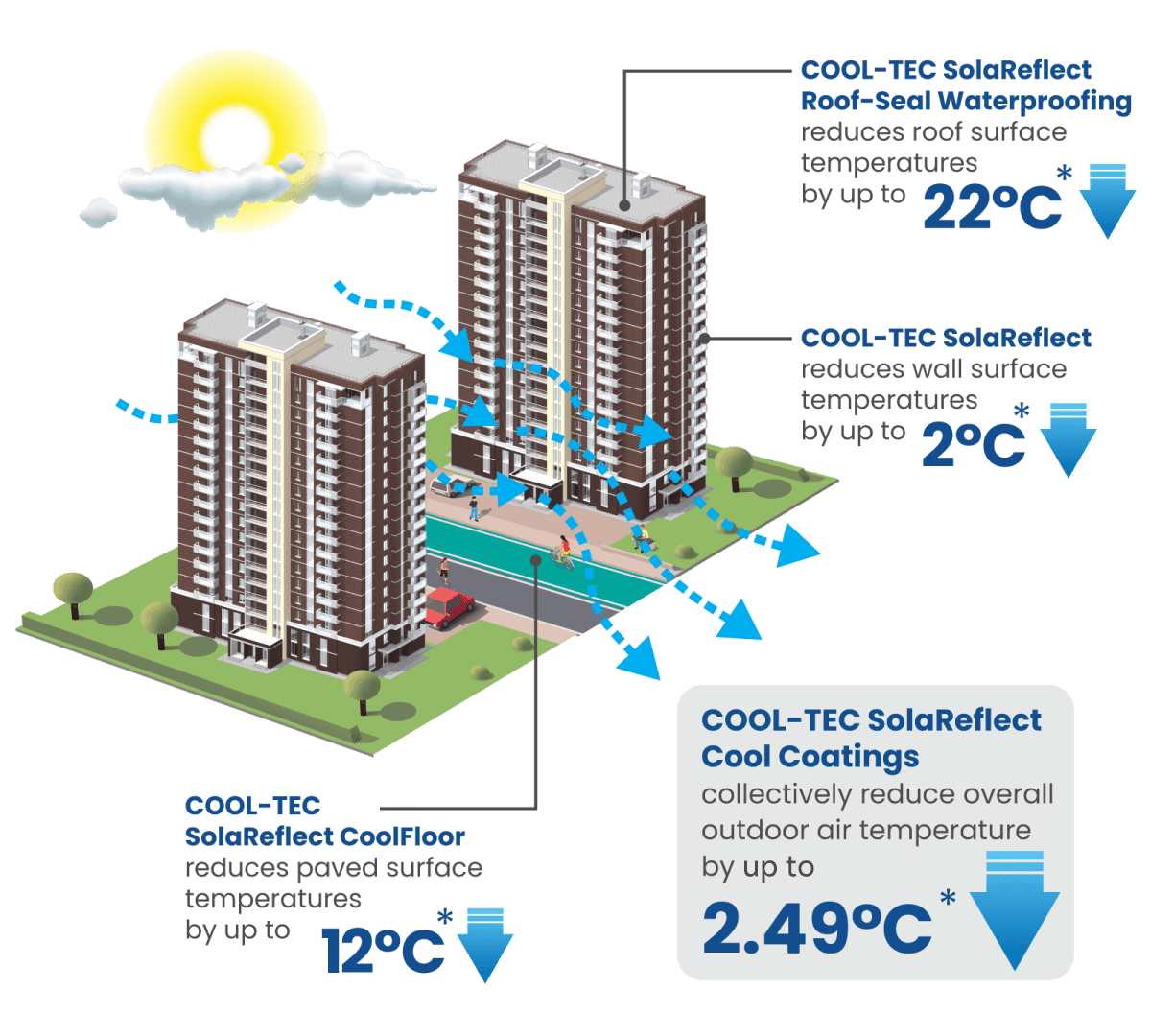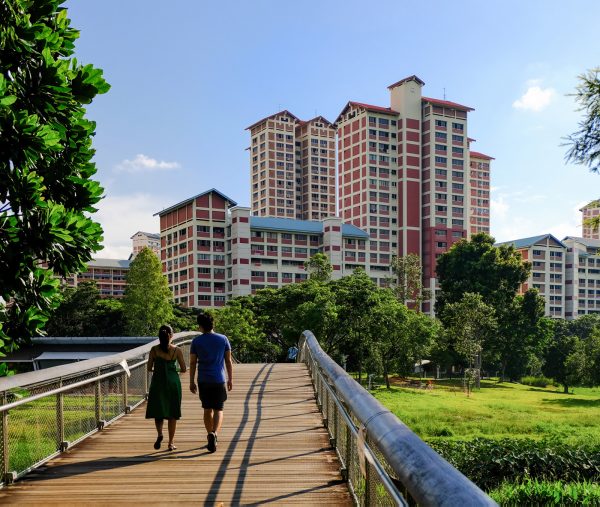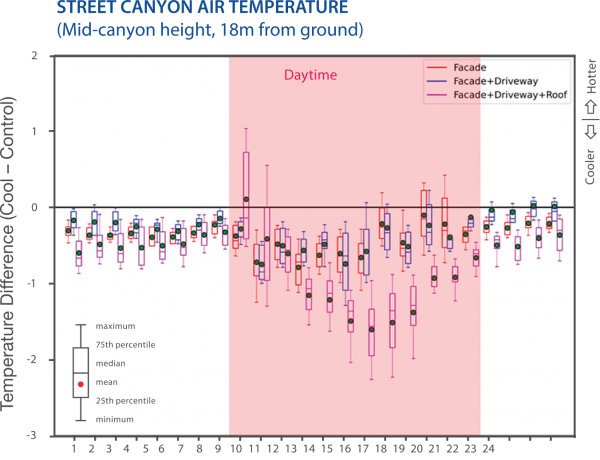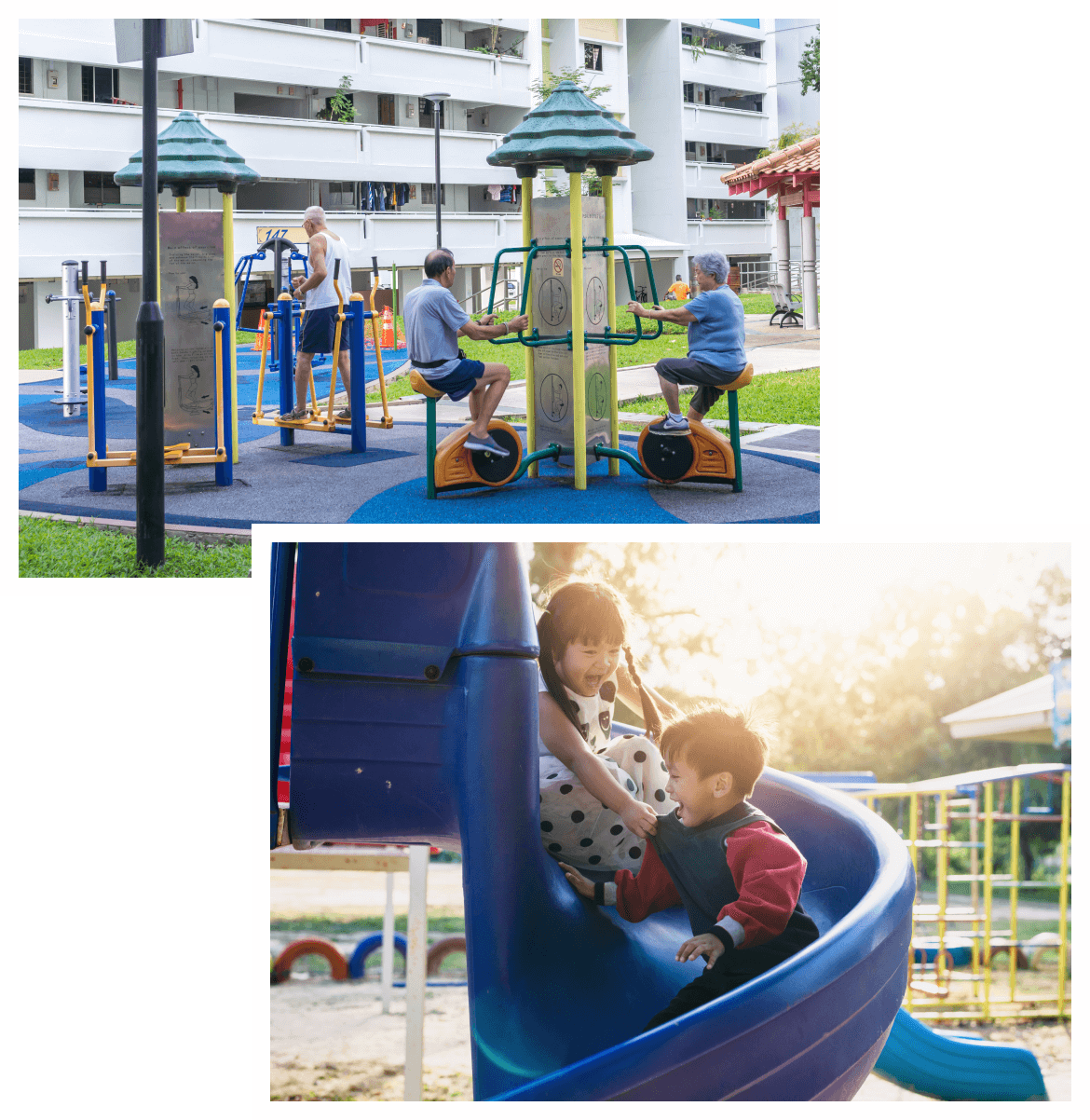The third-party comparative study that produced the data cited here employed rigorous scientific methods and thermal imaging equipment to determine the intensity of infrared radiation emitted from heat on buildings’ surfaces, with and without cool coatings.
To measure the infrared radiation emitted from heat, thermal imaging equipment is used to diagnose the building condition and convert the reading into a visible image. Warmer components or regions will show up as reds, oranges and yellows, while cooler parts will typically be shown as purples and blues (green usually indicates areas that are roughly at room temperature).
Roof
The coated roof’s surface temperature achieved up to 22°C reduction at midday when the temperature is usually the hottest.
The air temperature measured at the building’s rooftop and top floor corridor also showed a reduction, indicating improved thermal comfort.
FACADE
The coated exterior’s surface temperature achieved up to 2°C reduction at midday when the temperature is usually the hottest.
Carpark
The coated driveway’s surface temperature achieved up to 12°C reduction at midday when the temperature
is usually the hottest.
**The independent case study specifically examines the cooling effects of cool coatings on exterior environment temperature. Factors such as road surface, slip resistance, motorist speed, and current condition of asphalt surfaces do not form part of the study.
The air temperature measured also showed a reduction, indicating improved thermal comfort for pedestrians.
#Universal Thermal Climate Index (UTCI) is a bioclimatic index for describing the physiological comfort of the human body under specific meteorological conditions such as ambient temperature, humidity, wind and radiation etc that affects our physiological reaction to the surrounding environment.
